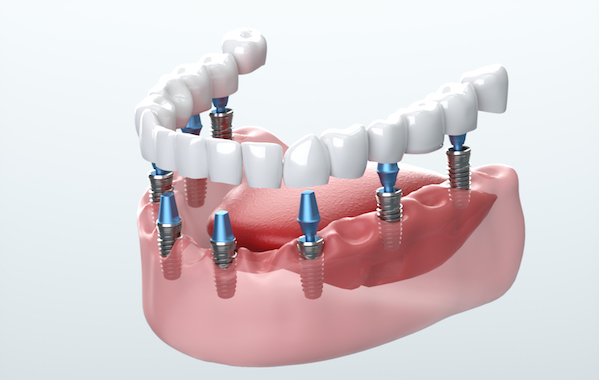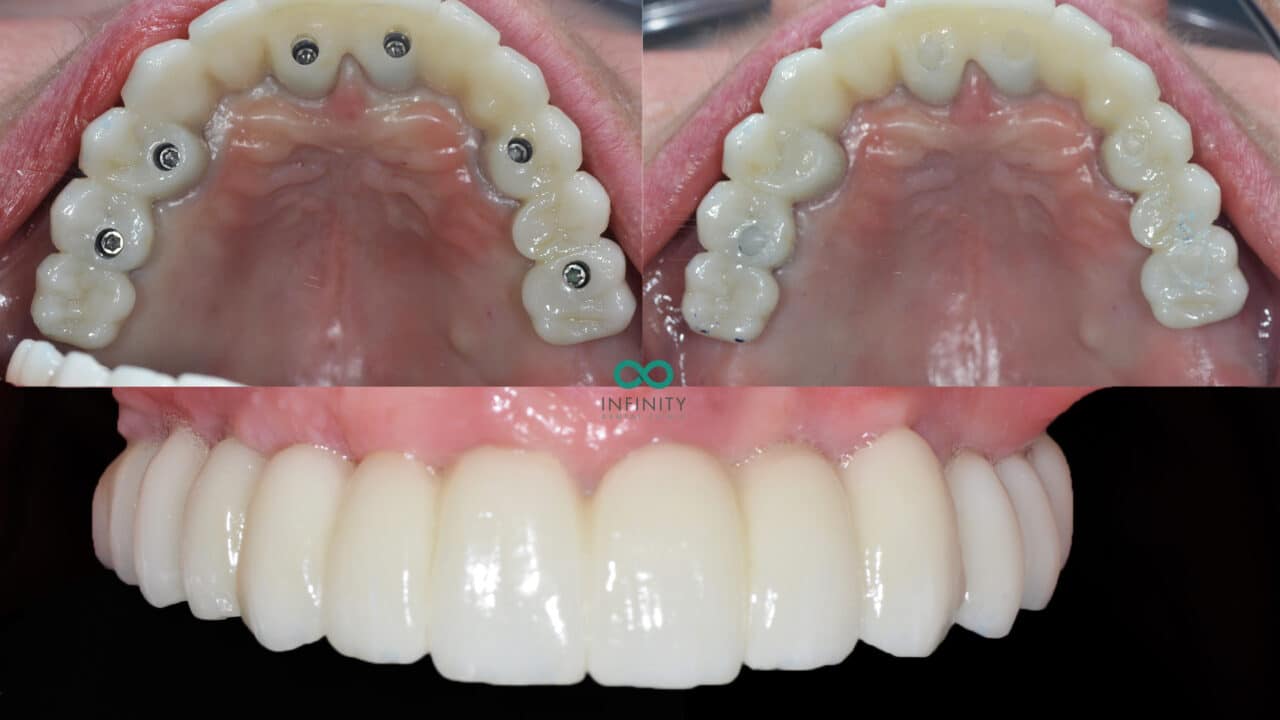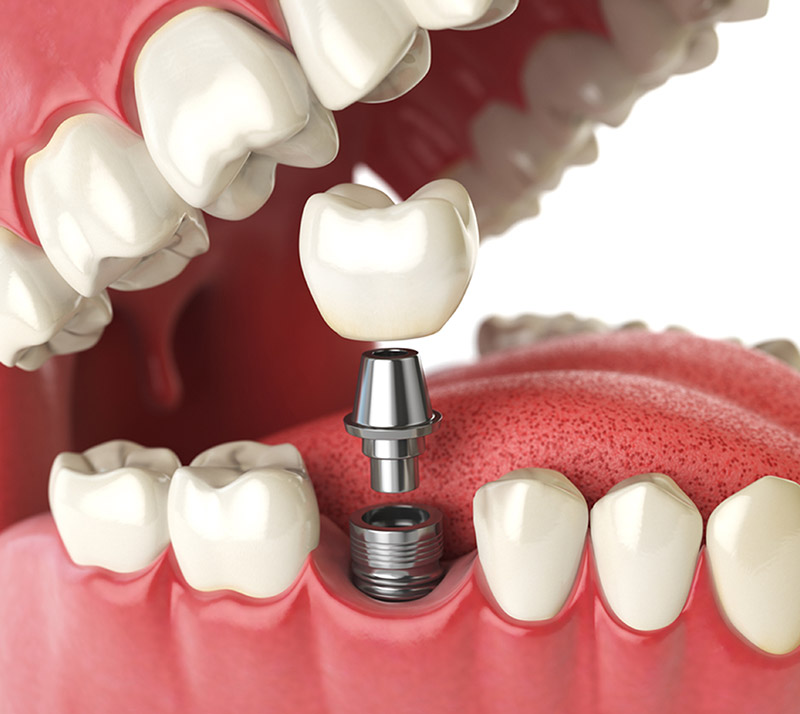Dental Implant Grand Rapids MI - Dental Implants
Dental Implant Grand Rapids MI - Dental Implants
Blog Article
Denture Dental Implants Norton Shores MI - Dental Implants Advantages
The journey towards dental implants begins with a thorough evaluation of the jawbone's condition. When there's inadequate bone density to help an implant, bone grafting turns into an important process to recreate a stable basis. Understanding how much bone grafting is anonymous needed for dental implants tremendously influences the treatment plan, timeline, and total success Dental Implant And Bridges Norton Shores MI rate.
The amount of bone grafting required is decided by a number of components, including the extent of bone loss, the implant's measurement, and the particular location within the mouth. In circumstances of significant bone loss because of periodontal ailments, trauma, or prolonged tooth loss, more intensive grafting may be needed. Conversely, if the bone loss is minimal, a smaller graft could suffice.
Denture Dental Implants Grand Haven MI - Dental Implants: What You Should Know
The evaluation course of usually includes imaging studies such as X-rays or 3D scans, permitting the dental skilled to visualize the bone structure (Dental Teeth Implants Holland MI). These pictures help in figuring out the quality and amount of present bone. If the bone is deemed insufficient, the dentist will then define the appropriate grafting procedures
Grafting can be sourced from numerous areas. Autografts, which involve harvesting bone from the affected person's own physique, are often deemed the gold standard. These provide wonderful integration with the existing bone however come with the downside of further surgery. Other choices embrace allografts, which use donor bone, and artificial materials designed to imitate natural bone. Each choice has its personal implications on healing and success charges.
After figuring out the necessary quantity of bone grafting, the dental professional will create a tailor-made plan for the affected person. This plan might embody the timing of bone grafting in relation to the implant placement. In some instances, a graft may be performed concurrently with the implant surgery. Alternatively, in more difficult eventualities, a separate healing interval is indicated.
Healing timelines vary based mostly on the individual's health, the extent of grafting, and the sort of graft used. Generally, the therapeutic of a bone graft takes a number of months earlier than an implant could be positioned. During this time, bone regeneration occurs, resulting in a stable base for the implant.
Denture Dental Implants Muskegon MI - Dental Implants Tooth Replacement
Patients typically marvel concerning the risks associated with bone grafting. While complications such as infection or graft failure are possible, these events are relatively rare. Adhering to post-operative care instructions and attending follow-up appointments minimize risks and promote therapeutic.
Once the bone has adequately healed, the dentist assesses the graft's success by evaluating the bone density and stability. If every little thing appears favorable, the subsequent steps toward placing the dental implant can start. The success of this subsequent step largely hinges on the standard of the bone graft and its integration with the surrounding bone.
Cost concerns play an important role in the decision-making process. The expense of bone grafting varies based on supplies used, the complexity of the case, and geographic location. It is crucial for sufferers to debate funds upfront to avoid unexpected bills later in the therapy.
Implants Dental Implants Muskegon MI - Dental Implants surgery
Also, sufferers should have practical expectations concerning the timeline and outcomes. Many elements can affect how much bone grafting is required and its overall effectiveness. A collaborative strategy involving the affected person and the dental team not only ensures readability but also enhances the probabilities of a profitable outcome.

Maintaining good oral hygiene and common dental visits following the process is significant. These practices can prevent issues and be certain that both the graft and the implant remain steady over time. The ongoing relationship with a dental professional is essential, particularly in the months following the procedures.
In conclusion, understanding how a lot bone grafting is required for dental implants encompasses a multi-faceted approach that considers bone quality, grafting varieties, therapeutic time, and overall patient health. The steadiness between achieving the desired aesthetic and practical outcomes while minimizing risks and complications is on the heart of dental implant procedures. The journey may be extensive, however a well-planned method maximizes the chances for a successful, long-lasting end in restorative dental work.
- Determining the quantity of bone grafting required for dental implants often hinges on the initial bone density and quantity of the affected person's jawbone.
- Each affected person's case is unique; elements similar to earlier extractions, periodontal disease, or trauma can influence the need for grafting.
- A 3D imaging scan is typically carried out to evaluate the exact dimensions of the available bone and inform the grafting technique.
- The kind of dental implant placement—immediate or delayed—may dictate the quantity of bone grafting necessary for stability and integration.
- Different types of graft materials, similar to autografts, allografts, or artificial choices, can impression how much grafting material is needed.
- Assessing the patient's general health, age, and way of life habits can have an result on the therapeutic course of, influencing graft quantity necessities.
- The depth and placement of the implant can necessitate varying amounts of graft material to secure optimal outcomes.
- Successful integration of the dental implant often depends on adequate bone density, resulting in a tailor-made grafting strategy for each particular person.
- Consultation with an oral surgeon will provide a clearer estimate of the bone grafting needed based mostly on comprehensive evaluations and imaging results.
- Post-grafting healing time varies; thus, a careful evaluation is important to determine the final amount of grafting required for successful implantation.undefinedHow much bone grafting is needed for dental implants?
Dental Implant And Bridges Muskegon MI - Dental Implants for Multiple Missing Teeth
What is bone grafting and why is it needed for dental implants?undefinedBone grafting is a surgical process that adds bone or bone-like materials to the jawbone. It is necessary for dental implants when the present bone is insufficient to assist the implant, ensuring stability and long-term success.
How do I know if I want a bone graft for dental implants?undefinedYour dentist or oral surgeon will evaluate your jawbone through x-rays or 3D imaging to discover out its density and quantity. If they find that you lack sufficient bone, they'll recommend a bone graft earlier than proceeding with the dental implant.
Dental Tooth Implant Muskegon Heights MI - Dental Implants for Multiple Missing Teeth
What elements affect the quantity of bone grafting needed?undefinedFactors embody the scale and placement of the implant web site, the health and density of existing bone, and individual healing capacity (Dental Implant Walker MI). These parts help the dentist determine the appropriate quantity of graft materials wanted
Are there several varieties of bone grafts used for dental implants?undefinedYes, there are a number of sorts, together with autografts (from your individual body), allografts (from a donor), xenografts (from animals), and artificial graft materials. Each type has unique advantages and could be selected primarily based on particular person patient needs.
Affordable Dental Implants Near Me Grand Haven MI - Implants Dentistry - Dental Implants
How long does the bone grafting procedure take?undefinedThe period varies primarily based on the complexity of the grafting process and the extent of the world handled. Generally, a bone grafting process can take anywhere from 30 minutes to some hours, relying on the specific circumstances.
What is the recovery time after a bone graft for implants?undefinedRecovery times can differ, but sometimes, preliminary therapeutic may take a few weeks, whereas full integration of the graft with the bone can take several months. Your dentist will present a personalised timeline primarily based in your scenario.

Will I experience pain after the bone grafting procedure?undefinedSome discomfort is widespread after a bone graft, nevertheless it's typically manageable with prescribed pain treatment. Most sufferers report that pain diminishes significantly within a number of days.
Denture Dental Implants Grandville MI - Dental Implants - Oral and Maxillofacial Surgery
How does bone grafting have an result on the general dental implant timeline?undefinedBone grafting might prolong the overall timeline for receiving dental implants, because it requires a therapeutic interval before implants can be positioned. This can add several months to the process but is crucial for a profitable implant placement.

Are there risks associated with bone grafting for dental implants?undefinedLike any surgical process, bone grafting carries some risks, corresponding to infection, graft failure, or issues associated to anesthesia. However, when performed by an experienced professional, these risks are typically low.
Can I even have dental implants positioned immediately after a bone graft?undefinedIn many cases, dental implants cannot be positioned instantly after a bone graft because of the need for the graft to integrate into the present bone. However, some methods, like quick loading, may enable for this underneath specific conditions. Your provider will advise you on the most fitted choice based mostly on your circumstances.
Report this page